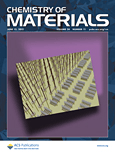
CHEMISTRY OF MATERIALS
Scope & Guideline
Bridging Chemistry and Engineering for a Sustainable Future
Introduction
Aims and Scopes
- Material Synthesis and Characterization:
The journal emphasizes novel synthesis techniques for various materials, including metal-organic frameworks (MOFs), polymers, and nanocrystals. It covers methods such as atomic layer deposition, hydrothermal synthesis, and mechanochemical approaches. - Functional Materials Development:
A significant core area is the development of functional materials, including electrochemical devices, photonic materials, and catalysts. The research often explores how structural properties influence these functionalities. - Interfacial Chemistry and Material Interfaces:
Research frequently addresses the chemistry at material interfaces, which is critical for applications in electronics, catalysis, and energy storage. This includes studies on surface modification, interfacial charge transfer, and reactive layers. - Machine Learning and Computational Materials Science:
The journal increasingly incorporates machine learning and computational techniques to predict material properties, optimize synthesis conditions, and explore structure-property relationships, enhancing the efficiency of materials discovery. - Sustainability and Environmental Applications:
Recent papers highlight sustainable materials and processes, including the development of biodegradable materials, efficient recycling methods, and materials for environmental remediation.
Trending and Emerging
- Nanostructured Materials and Their Applications:
Recent publications emphasize the synthesis and application of nanostructured materials, particularly in electronics and catalysis. This includes studies on quantum dots, nanocrystals, and nanocomposites. - Hybrid and Multifunctional Materials:
There is an increasing focus on hybrid materials that combine organic and inorganic components. These materials are being studied for their multifunctional properties, including enhanced photonic, electronic, and catalytic capabilities. - Sustainable and Green Chemistry:
Research highlighting sustainable practices in materials synthesis and the development of eco-friendly materials is on the rise. This includes biodegradable materials and processes that minimize environmental impact. - Advanced Characterization Techniques:
Emerging trends show a growing interest in advanced characterization methods, such as in situ techniques and synchrotron radiation, to provide deeper insights into material behaviors and properties. - Machine Learning and Data-Driven Approaches:
The integration of machine learning and data-driven methodologies into materials science research is trending upward. This approach is being utilized for predicting material properties, optimizing synthesis routes, and improving material design.
Declining or Waning
- Traditional Inorganic Synthesis Methods:
There has been a noticeable decrease in publications focused solely on traditional inorganic synthesis methods, such as solid-state reactions, as researchers increasingly pursue more innovative and efficient approaches. - Non-advanced Organic Materials:
The exploration of non-advanced organic materials, particularly those lacking functionalization or sophisticated structures, seems to be waning. The focus is shifting towards more complex and functional organic materials. - Applications of Materials in Conventional Energy Storage:
Research papers centered on conventional energy storage systems, such as lead-acid batteries, are less frequent, with a greater emphasis on innovative storage solutions like solid-state batteries and supercapacitors. - Basic Theoretical Studies:
There is a decline in purely theoretical studies without experimental validation or application. The journal increasingly favors research that combines theoretical insights with practical applications.
Similar Journals
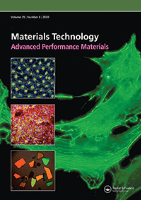
MATERIALS TECHNOLOGY
Unlocking the Potential of Condensed Matter PhysicsMATERIALS TECHNOLOGY is a prestigious academic journal published by Taylor & Francis Ltd, based in the United Kingdom. With an ISSN of 1066-7857 and an E-ISSN of 1753-5557, this journal has established itself as a vital resource in the fields of Condensed Matter Physics, Materials Science, Mechanical Engineering, and Mechanics of Materials, earning a Q2 ranking in multiple categories as of 2023. With a rich publication history that dates back to the early 1970s, it serves as an essential platform for disseminating innovative research and developments in materials technology. Although not available through Open Access, the journal continues to attract contributions from leading researchers, ensuring high-quality articles that advance knowledge in the materials domain. The journal's commitment to excellence is reflected in its notable Scopus rankings, placing it within the 70th to 78th percentiles across several engineering and physics categories. As a vital resource for researchers, professionals, and students alike, MATERIALS TECHNOLOGY plays a critical role in shaping the future of materials science and engineering.
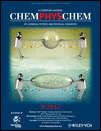
CHEMPHYSCHEM
Unveiling the Complex Interactions of Matter and EnergyCHEMPHYSCHEM, published by WILEY-V C H VERLAG GMBH in Germany, stands as a pivotal resource for researchers and professionals in the fields of Atomic and Molecular Physics, as well as Physical and Theoretical Chemistry. With a commendable impact across its converged years from 2000 to 2024, the journal is categorized in the second quartile (Q2) for both aforementioned fields according to the 2023 metrics, underscoring its significance in advancing scientific dialogue and research. CHEMPHYSCHEM is committed to disseminating high-quality, peer-reviewed research articles that delve into the intricate interplay between chemistry and physics, making it an essential read for students and experts alike. The journal does not currently offer open access options, allowing for focused scholarly discussions that cater to the academic community's needs. As reflected in its Scopus rankings, CHEMPHYSCHEM maintains respectable standings, ranking #84/224 and #90/189 in its respective categories, demonstrating its commitment to high-impact research and innovation.
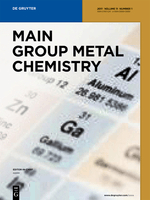
MAIN GROUP METAL CHEMISTRY
Empowering Researchers with Open Access InsightsMAIN GROUP METAL CHEMISTRY, published by De Gruyter Poland Sp. z o. o., is an esteemed open access journal that has made a significant impact in the fields of Chemistry, Condensed Matter Physics, and Materials Science since its inception in 1988. With its ongoing publication aimed at advancing scholarly discourse until 2024, this journal is indexed in leading databases and has earned a diverse readership due to its rigorous peer-review process and relevant contribution to the understanding of metal chemistry. In the 2023 category quartiles, it has been recognized as Q2 in Metals and Alloys and holds Q3 rankings in Chemistry (miscellaneous), Condensed Matter Physics, and Materials Chemistry, showcasing its interdisciplinary appeal and recognition in the scientific community. The journal's innovative open access model, implemented in 2019, enhances visibility and accessibility for researchers worldwide, fostering collaboration and discovery among professionals, students, and academics alike. By presenting high-quality research and critical reviews, MAIN GROUP METAL CHEMISTRY serves as a vital resource for those seeking to deepen their understanding of metal interactions and their applications in advanced materials.

CHINESE JOURNAL OF STRUCTURAL CHEMISTRY
Unveiling the Secrets of Structural DynamicsThe CHINESE JOURNAL OF STRUCTURAL CHEMISTRY, published by Elsevier, stands as a vital resource in the field of structural chemistry, notably contributing to the advancement of knowledge since its inception in 1996. With its ISSN 0254-5861 and E-ISSN 0254-5861, the journal has established a firm reputation, garnering a Q2 ranking in the 2023 Chemistry (miscellaneous) category, which highlights its influence in the academic community (rank #155/408, 62nd percentile in Scopus). This journal serves as an invaluable platform for researchers and professionals by disseminating high-quality research findings, theoretical studies, and applied methodologies that address both fundamental aspects and emerging trends in structural chemistry. With contributions from distinguished scholars, it aims to foster innovation and collaboration, while providing a space for novel discoveries in the field. Although it does not currently offer Open Access, its robust content continues to attract a diverse readership eager to engage with cutting-edge scientific developments.

Materials Research Express
Unlocking innovative solutions through research.Materials Research Express is a leading open-access journal published by IOP Publishing Ltd, situated in the United Kingdom. Since its establishment in 2014, the journal has become an essential platform for researchers and professionals in the field of materials science, spanning several critical domains including biomaterials, metals and alloys, polymers, and electronic materials. With an open-access model adopted in 2020, Materials Research Express ensures that cutting-edge research is accessible to a global audience, enriching the dissemination of knowledge within the scientific community. The journal boasts impressive Scopus rankings, with a commendable position in various categories, such as 45th in Metals and Alloys and 51st in Surfaces, Coatings, and Films. This positions it well in the competitive landscape of materials science, fostering innovative discussions on material properties and applications. As the field continues to evolve, Materials Research Express aims to provide high-quality research and insights that address contemporary challenges and emerging technologies, making it an indispensable resource for academics and industry professionals alike.
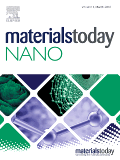
Materials Today Nano
Pioneering Discoveries in Nano-Materials for a Sustainable FutureMaterials Today Nano, published by Elsevier, is a premier academic journal dedicated to the forefront of nano-materials research, encompassing innovations and advancements in biomaterials, condensed matter physics, electronic, optical, and magnetic materials, as well as materials chemistry. With an impressive Q1 ranking across multiple categories, including biomaterials and materials chemistry, this journal serves as a essential platform for researchers, professionals, and students aiming to contribute to and stay informed on cutting-edge developments that push the boundaries of materials science. Its open access model allows for wider dissemination of high-impact findings, ensuring that the research reaches a global audience. Operating from the United Kingdom, Materials Today Nano plays a vital role in fostering interdisciplinary collaboration and advancing scientific understanding in this rapidly evolving field.

CCS Chemistry
Showcasing Excellence in Chemical Science and InnovationCCS Chemistry, published by the esteemed Chinese Chemical Society, is a leading open-access journal dedicated to advancing the field of chemistry. Since its inception in 2019, the journal has rapidly gained recognition, achieving a remarkable impact factor that places it in the prestigious Q1 category in Chemistry (Miscellaneous) as of 2023. With a Scopus ranking of #41 out of 408 in General Chemistry, CCS Chemistry represents the top 10th percentile in its category, reflecting its commitment to high-quality research and innovation. The journal serves as a vital platform for researchers and professionals to share their findings, showcase cutting-edge methodologies, and engage with the latest developments in various chemistry subfields. Accessible to a global audience, CCS Chemistry ensures that groundbreaking research is available without barriers, making it an indispensable resource for students and academics aiming to stay at the forefront of chemical sciences. For further details, submissions, and access to published articles, please visit the journal's website.

Materials Chemistry Frontiers
Exploring the Future of Materials ScienceMaterials Chemistry Frontiers, published by the esteemed Royal Society of Chemistry, stands as a leading journal in the realm of materials science and chemistry, with an impressive Q1 ranking in both Materials Chemistry and Materials Science categories as of 2023. This open-access journal, operating from the United Kingdom, offers a platform for researchers, professionals, and students to disseminate high-quality, impactful research. With its E-ISSN 2052-1537, the journal is dedicated to publishing cutting-edge articles, reviews, and research communications that explore innovative materials and their applications, fostering a comprehensive understanding of the complex interplay between materials and their chemical properties. With consistent rankings in the Scopus metrics, being positioned at the 25th percentile among 317 in the Materials Chemistry category, it highlights its pivotal role in advancing the field. The journal thrives on contributions that broaden the scope of knowledge from 2017 to 2024 and beyond, solidifying its status as an essential resource for contemporary research in materials science.

JOURNAL OF MATERIALS SCIENCE-MATERIALS IN ELECTRONICS
Driving Progress in Electronic Materials ResearchJOURNAL OF MATERIALS SCIENCE-MATERIALS IN ELECTRONICS, published by Springer, is a distinguished international journal that serves as a vital platform for the dissemination of cutting-edge research in the field of materials science, with a keen focus on electronics. Since its inception in 1990, this journal has consistently contributed to the advancement of knowledge across a range of interdisciplinary categories, including Atomic and Molecular Physics, Optical and Magnetic Materials, and Biomedical Engineering, achieving notable quartile positions in various 2023 Scopus rankings. With an impact factor that signifies its scholarly influence, this journal provides a rigorous peer-reviewed environment for researchers and practitioners to share innovative ideas, experimental findings, and theoretical developments. Although it does not currently offer open access options, the depth and breadth of topics covered—including condensed matter physics and bioengineering—make it an essential resource for those at the forefront of materials research. With a commitment to bridging the gap between theory and practical application, the JOURNAL OF MATERIALS SCIENCE-MATERIALS IN ELECTRONICS continues to pave the way for future explorations in the ever-evolving landscape of materials science.
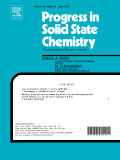
PROGRESS IN SOLID STATE CHEMISTRY
Connecting Theory and Practice in Materials SciencePROGRESS IN SOLID STATE CHEMISTRY, published by PERGAMON-ELSEVIER SCIENCE LTD, serves as a pivotal platform for disseminating cutting-edge research and advancements in the field of solid state chemistry. With an impressive impact factor and a respected status, this journal consistently ranks in the Q1 category across multiple disciplines, including Condensed Matter Physics, Materials Science, and Physical and Theoretical Chemistry. Following a rigorous peer-review process, it features articles that explore theoretical frameworks and experimental findings, thereby fostering innovation and collaboration among researchers and professionals. Although it does not adopt an open access model, its substantial reach and high Scopus rankings—19th in Condensed Matter Physics, 14th in Physical and Theoretical Chemistry, and 48th in General Materials Science—underscore its influence in shaping the future of materials research. Established in 1964, the journal continues to contribute significantly to the academic community, bridging the gap between theory and practical application in solid state materials.